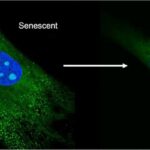The world is rapidly aging. According to the World Health Organization, 12% of the world population was aged 60 and above in 2015 and by 2050, that number will rise to 22%. Along with this demographic shift, there is an increase in the prevalence of age-related chronic diseases including cancer, liver fibrosis, and Alzheimer’s disease in which senescent cells have been implicated.
Related Posts
Recent News in Senolytics
-

-
 The Promise of Senolytic TherapiesOct 2, 2023 | Senolytic News
The Promise of Senolytic TherapiesOct 2, 2023 | Senolytic News -
 AI Unlocks New Frontier in Anti-Aging MedicineAug 24, 2023 | Senolytic News
AI Unlocks New Frontier in Anti-Aging MedicineAug 24, 2023 | Senolytic News -
 Reversing Aging in Stem CellsJun 29, 2023 | Uncategorized
Reversing Aging in Stem CellsJun 29, 2023 | Uncategorized -
Fighting aging with immune checkpoint blockadeNov 23, 2022 | Senolytic News
-
-
-
-
Senolytic treatment shows promise in DME, wet AMDNov 20, 2022 | Senolytic News
-
-
-
Senolytics to Tackle Age-Related PathologiesNov 19, 2022 | Senolytic News




